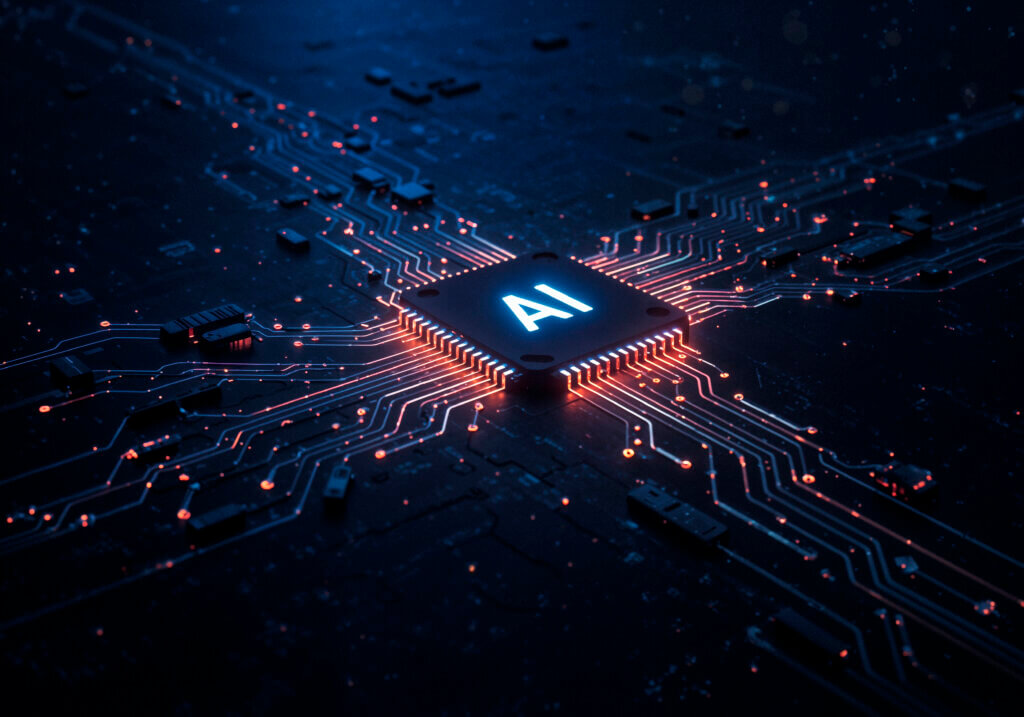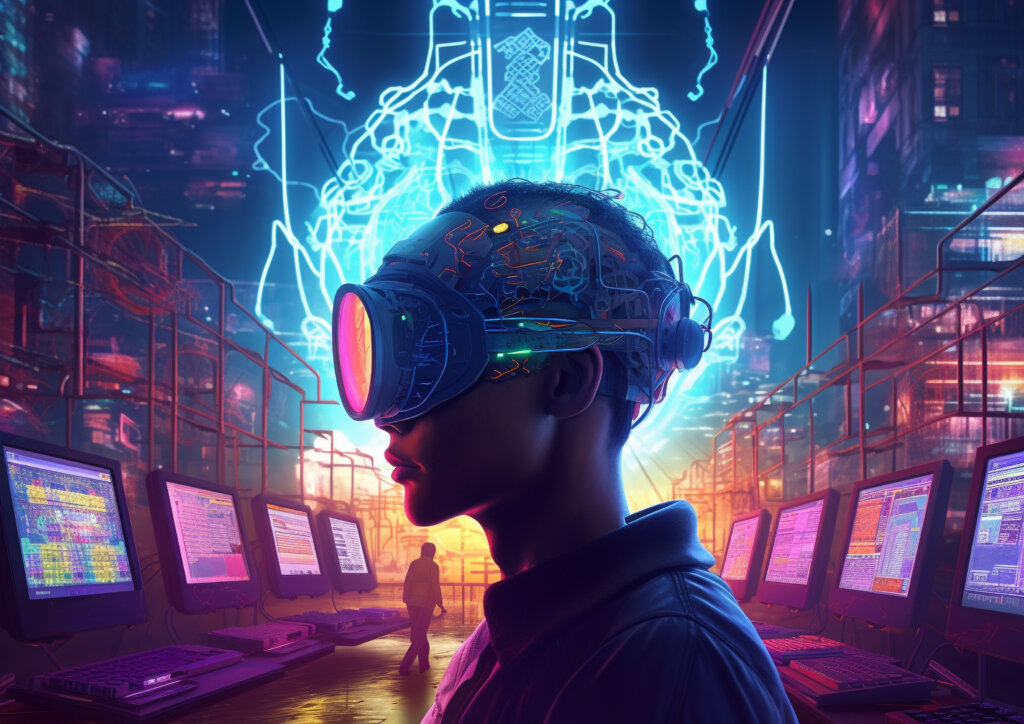Artificial Intelligence has been a transformative tool in modern times. It paved the way for revolutionary innovations that continue to test the limits of what is possible. In line with this, the development of more advanced artificial intelligence in gaming opens new and exciting possibilities in the industry. It also continues to make waves with the global artificial intelligence in games market size now expected to rise from $7.05 billion in 2025 to an estimated $37.89 billion by 2034. But how is artificial intelligence in computer games used today, and why are these advancements such a big deal?
This article provides a thorough discussion of AI in gaming, why it matters, the future of AI in video games, and much more.
What is AI in Gaming?
Before anything else, let us answer the question: What is AI in video games?
Artificial intelligence is programming that enables certain characters in a video game, such as non-playable characters (NPCs) and enemies, to act as if they were controlled by a human or to act with a mind of their own.
AI in gaming is used to make games feel more immersive, but what does this mean in practice? Here is a closer look.
Examples of artificial intelligence in games:

If you’ve ever played the classic game Pac-Man, then you have experienced one of the early examples of artificial intelligence in games. As Pac-Man tries to collect all the dots on the screen, he is ruthlessly pursued by four different colored ghosts. But they don’t just follow him; when you’re playing, they seem to try to ambush the player.
How did they accomplish this? The ghosts are programmed to know Pac-Man’s location, but each one is set to act a little differently in response to it. Specifically, one of the ghosts is set to wander, one is set to aggressively follow Pacman, one is set to go in the direction where Pacman is going, one is set to move randomly unless another ghost is close to catching Pacman, and the final ghost is set to follow Pacman when he’s far away, but go to a specific location on the map when he’s close.
In short, these four behaviors make these ghosts, even in a game from 1980, appear to have a will of their own. They feel alive. And that is the purpose of AI in gaming.
Why Does AI in Gaming Matter?
Nearly all games use artificial intelligence and gaming together to some extent. The goal of this smart technology is to immerse gamers as much as possible by giving characters a lifelike quality, even if the game itself is set in a fantasy world. As AI gets better and more advanced, the options for how it interacts with a player’s experience also change. That is why, without AI in gaming, it would be hard for a video game to provide an immersive experience.
How is AI in Gaming Evolving?
Traditionally, AI in gaming has focused on two areas: pathfinding and finite state machines. Pathfinding tells NPCs where they can move. On the other hand, finite state machines allow behavior changes based on conditions.
A good example of this in action is the enemy soldiers in the Metal Gear Solid series. When you enter their field of vision and are spotted, it triggers an alarm, and all of the enemies in the area begin to converge on your location and attack. You have to leave their field of vision and hide for long enough for the guards to give up the chase, and return to their initial positions. In the same sense, when an NPC in the Sims series is hungry, it gets food. When they are tired, they head to bed.
These methods create the illusion of decision-making. However, the evolution of artificial intelligence in game design now enables more complex behaviors and realistic interactions.
So, how is AI in gaming evolving? Already, it’s changed greatly with the sheer amount of pathfinding and states that developers can give to NPCs. In fact, when combined, artificial intelligence and video games may eventually be able to create realistic landscapes from scratch, including walls, buildings, and obstacles. There will be a time when the future of AI in games will no longer be limited by pre-coded instructions. We could give NPCs actual emotions, with personalities, memories, dreams, ambitions, and an intelligence that’s indistinguishable from humans.
Using AI in Game Development

AI and gaming are not solely about NPCs in a finished product, but they are also becoming essential tools in game development. For instance, deep learning and generative AI can now automate levels, characters, and environments.
As AI continues to be able to analyze player behavior, we might soon see games that are designed based on individual preferences. Imagine artificial gaming that adapts to your habits and unique playstyle.
It’s hard to say if it will get this far anytime soon, but it would be no surprise if we start to see AI take a bigger role in game development in the next few years, especially with the availability of AI tools. If it happens, then developers will have the freedom to focus on creative direction rather than repetitive design tasks.
Pros and Cons of AI in Video Games
So what are some of the advantages and disadvantages of AI’s evolving status, and the new technologies that are coming out? Here are just a few of the pros and cons worth thinking about as the new era in gaming rises.
Advantages of AI in gaming:
- Swift development cycles with AI managing repetitive tasks
- More advanced worlds and characters made with procedural generation
- Highly immersive games that contain NPCs with a wider range of actions
- NPCs that can provide dynamic emotional responses
Disadvantages of AI in gaming:
- Developers get minimal control
- Immersion-breaking glitches
- Complex or frustrating gameplay risks
- Possible job loss in the gaming industry
The Future of AI in Gaming

As AI in gaming continues to advance, we can look forward to smarter NPCs, lifelike assets, and AI-assisted storytelling. At the same time, small developers may experiment first with creative, innovative gameplay experiences that test the limits of this technology in upcoming indie games.
While large studios are cautious, it cannot be denied that technology is likely to become more reliable. So, advanced AI could soon redefine standards in the gaming industry, changing how AI in games is applied.
Looking at how fast technology is progressing, we may have everything we have always dreamed AI could be by the end of the decade.
Will AI in Gaming Make Games Too Hard?
There is an old saying that still holds up: Be careful what you wish for. It is entirely possible that as we continue to employ AI in gaming, we may run into some problems. Specifically, the decision about game difficulty could become very tricky.
If, for example, the enemy AI knows how the player operates to such an extent that it can always win against them, it sucks the fun out of a game.
If a similarly difficult AI controlled every aspect of a video game from the ground up, the results could be very unfair and broken. I
If NPCs in a game develop real, human-like personalities and intelligence, then maybe playing a game begins to feel a bit too overwhelming, as players are forced to juggle social responsibilities in both the real and virtual world.
The truth of the matter is, hurdles will have to be faced, but that doesn’t mean they will damage gaming forever. I mean, even failed experiments give you vital information. We’ll either stop using them or learn from our mistakes and make the next AI games more entertaining.
AI in Gaming Today
Artificial intelligence is not a thing of the past nor a future concept in gaming. It is already reshaping how games are designed, played, and experienced. With ever-evolving technology, the potential of AI in gaming remains enormous, making gaming limitless.
